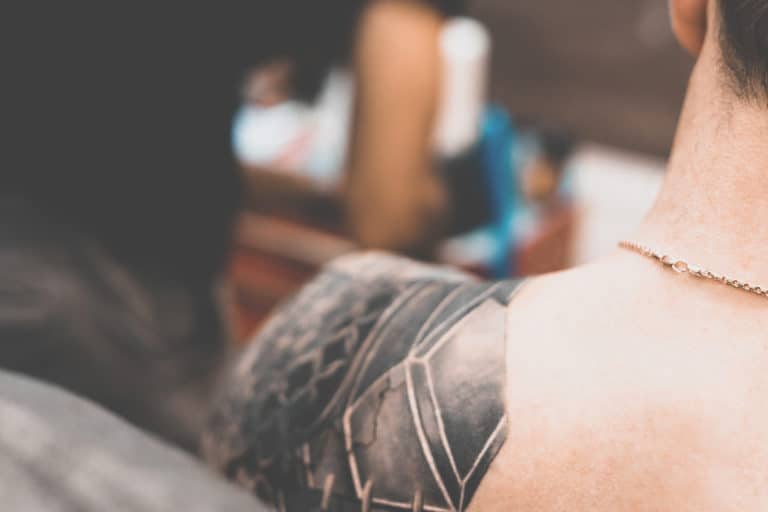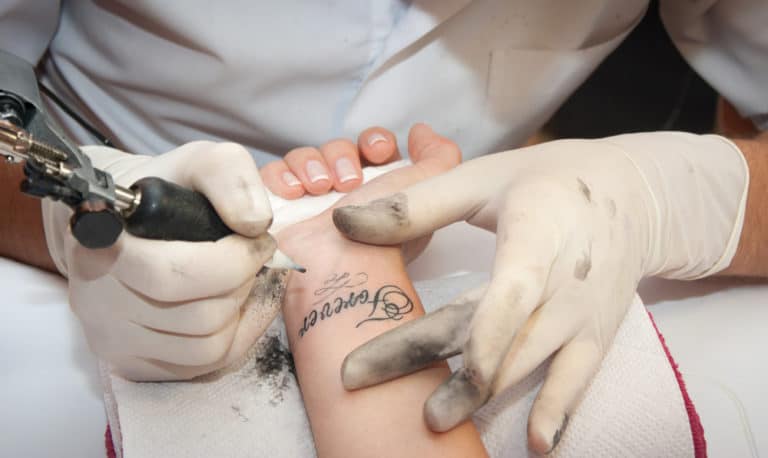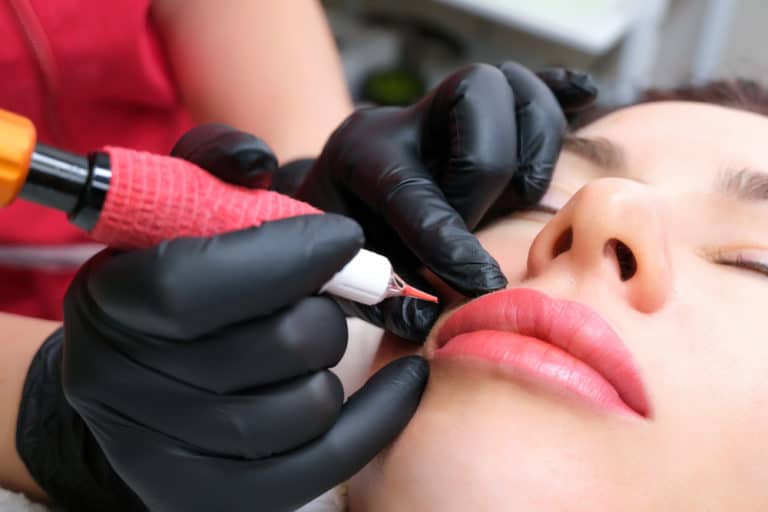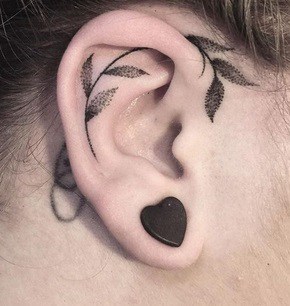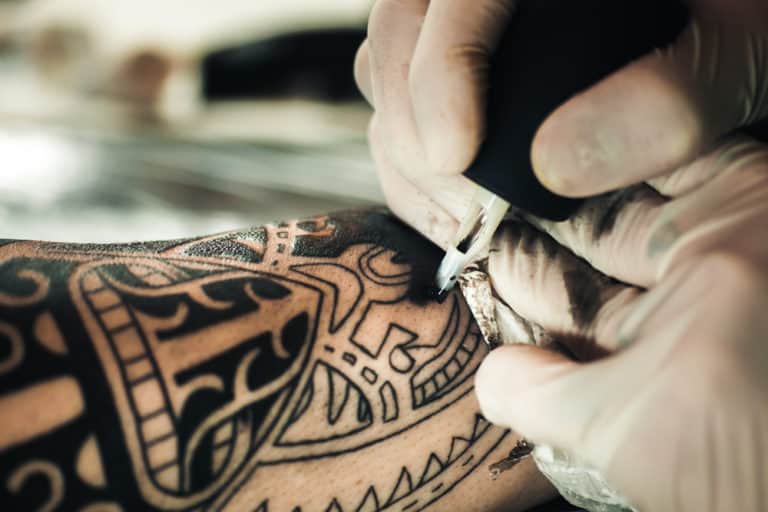Can You Ice A Tattoo?
If you’re considering getting a tattoo or have recently had one done, you probably know that the skin can look quite angry and swollen after the procedure. Red, swollen skin immediately propels us to get some ice to reduce the swelling and relieve the discomfort. However, is this a good idea when it comes to fresh tattoos?
Icing a tattoo is beneficial to the skin’s healing process when done using the correct methods. Using ice on newly tattooed skin helps to reduce swelling and inflammation, soothes pain and discomfort, and relieves itching. It also helps speed up the process of wound healing in a new tattoo.
Although you already expect some swelling and pain when getting a new tattoo, it’s always great to know how you can make the recovery process a bit more bearable without ruining your new ink. We explain how to ice your tattoo correctly during the aftercare process.
Can You Ice A Tattoo?
Every person’s biological makeup is different, and therefore the healing process of the skin is also unique to every individual. But using ice to speed up healing and make the recovery process more comfortable has been good medical aftercare advice for many years and has shown to be effective in most people with superficial skin injuries.
A new tattoo is nothing but an open wound on the skin induced by the tattoo needle. There will be swelling and inflammation, just like any other skin injury. Cooling the area down is one of the best ways to reduce swelling and soothe inflammation.
Therefore, if done correctly using the tips provided in this article, icing a tattoo is highly recommended and beneficial in the skin’s healing process.
Do You Have To Ice A New Tattoo?
There is no set rule stating that icing a tattoo is necessary for it to heal. Most tattoo artists will suggest that clients ice their new tattoos to help ease the pain and discomfort, as well as the swelling and inflammation that are associated with getting a new tattoo.
The skin can heal itself without the application of ice or cold compresses. However, it is worth noting that ice can help speed up the healing process and is therefore highly recommended!
Benefits Of Icing A New Tattoo
Soreness and sensitivity are completely normal after getting a new tattoo. Using ice may help to make the pain a bit more bearable while still allowing the skin to heal properly. Here we list a few other benefits of using ice on a fresh a tattoo:
1. Ice Relieves Pain Associated With A New Tattoo
Placing ice on the skin has a numbing effect, making it great for pain relief. Ice works by causing the constriction of blood vessels, which then reduces blood circulation in the area. Reduced blood circulation brings down the swelling and inflammation causing the pain. Regularly icing the tattoo will help you get through the first few days of discomfort while the skin heals.
2. Ice Cools The Skin Down After Getting A Tattoo
The skin surrounding a tattoo may feel warm during the first few hours after getting a new tattoo. Heat is a normal part of the inflammatory process but can be very uncomfortable. Using ice on the area will soothe the discomfort by cooling the skin down. Do not apply the ice bag directly on the skin – always use it wrapped in a cold compress.
3. Ice Reduces Weeping Of Fluids In A Tattoo
Since ice on the skin reduces blood circulation to the area, it can also benefit a fresh tattoo that is weeping fluids and plasma. Regularly using ice on the tattoo will help lessen the weeping so that your bandages can stay fresh for longer. ‘Always remember to check the area for infection if the weeping doesn’t subside within a few days.
4. Ice Reduces Itching With A New Tattoo
New tattoos tend to become itchy a few days after getting them done. This is a good sign and indicates that the tattoo is healing well. Itchiness can drive a person crazy, especially in the case of a new tattoo where you don’t want to scratch the area.
Due to its numbing effect, ice will also help relieve the itch temporarily until it naturally subsides after a few days. Use ice as often as you need to until the skin is completely healed and itch-free.
5. Ice Can Help Reduce Bruising In A New Tattoo
Bruises occur when trauma to the skin causes blood to seep out of damaged blood vessels into the surrounding tissue. Using ice on injured skin can significantly reduce bruising in the area by slowing down the blood circulation in the area and reducing the amount of blood that leaks out of the vessels. Ice minimizes the bruise’s size and helps it heal faster.
How To Ice A Tattoo: Do’s & Don’ts
When you have a beautiful new ink masterpiece on your body, you don’t want to make any mistakes that will negatively affect the healing process or cause prolonged discomfort. Using ice on a tattoo can speed up healing and make the first few days much easier, but it must be done right. We have listed a few do’s and don’ts that you can use as a guideline if you want to use ice on a new tattoo.
Do’s:
- Always wash your hands before you touch the tattoo or the towels and ice you want to use on the tattoo.
- Immediately after getting a tattoo, you can apply ice wrapped in a compress over the bandage (Tip: Never apply the ice bag directly on the dressing – there must be a towel between the dressing and the ice at all times!)
- If your tattoo artist used a Saniderm or Tegaderm wrap over the new tattoo, you can apply ice over the wrap, making sure to keep a towel or cloth between the ice and the wrap
- When the tattoo is no longer bandaged, make sure that you clean the area as per the tattoo artist’s instructions before applying the ice compress.
- Make sure the compress, towels, or cloths you are using to ice are clean out of the cupboard. Don’t use your regular bathroom towel.
- Make sure the cloth or towel you want to wrap the ice bag with is slightly damp before placing it on the skin. Dry towels or cloths may get stuck on the newly tattooed skin due to stickiness caused by weeping fluids like blood plasma.
- Keep the tattooed area elevated while you’re applying the ice. This will push the excess fluids to the lymph nodes and help the swelling go down quicker.
- Gently move the icepack around in circular movements while icing to prevent getting frostbite in the area.
Don’ts:
- Avoid touching any towels or ice you want to use on the tattooed skin before you have washed your hands.
- Never apply an ice bag directly to the open wound on tattooed skin – this increases the chance of getting an infection in the area
- Do not get the tattooed skin soaking wet when you ice, as this can affect the healing of the wound. Always wrap the ice in a compress and stop when the ice starts to melt and drip through the towel
- Do not apply too much pressure while you’re icing the tattoo because this damages the skin and can cause more inflammation and swelling
- Do not keep the ice stationary on the wound – the extreme cold can cause ice burn, which may lead to tissue damage and impede healing.
How Often Should You Ice A New Tattoo?
We recommend that you ice the tattooed area for 15-20 minutes at a time to help soothe the pain and reduce inflammation. During the first few days after getting a tattoo, try to apply the icepack every two to three hours to speed up the healing process. Do not ice for longer than 30 minutes at a time to avoid the area getting too cold.
How Long Should You Ice A Swollen Tattoo?
Icing a tattoo can be an excellent way to ensure a safe and quick healing process, especially when the tattoo is slightly swollen.
However, when it comes to fresh open wounds like a tattooed area on the skin, it’s always wise to take extra precautions and closely observe what is happening on the skin. Swelling of the skin occurs when blood vessels expand and bring fluids containing white blood cells and healing factors to the wound site and is a normal part of the inflammatory process in wound healing.
Slight swelling and bruising of a tattooed area usually occurs directly after getting a tattoo and can last up to three days. Using ice during this time will be very beneficial in reducing inflammation and easing the discomfort associated with the swelling.
If you’ve consistently been following aftercare protocol and been using ice on the tattoo, the swelling in the area should significantly reduce within three days after getting the tattoo. If the area becomes heavily swollen and remains swollen for a prolonged period of time, it may be wise to check whether the wound site may have become infected.
Can You Ice An Infected Tattoo?
Symptoms associated with an infected tattoo include pain, oozing pus, heavy swelling, redness, raised areas surrounding the tattoo, shivering, and fever. If you suspect that the area may be infected, it would be wise to seek advice from the tattoo artist or a medical doctor before continuing with the aftercare.
Although ice will surely help in the case of an infection, you need to remember that ice alone won’t get rid of the infection. However, ice used in conjunction with the right medicine will help heal the area with minimal damage to the tattoo ink.
How To Ice An Infected Tattoo
The method for icing an infected tattoo is basically the same as when you’re icing a healthy, healing tattoo. However, you should know that an infected tattoo can be very painful, and the skin is more fragile, so be extra careful not to apply too much pressure while you’re icing.
Make sure to wrap the ice bag in a towel or compress when applying it to the skin, and do not ice for longer than 30 minutes at a time. Never use the same towel or compress over the infected tattoo twice. Always go in with a new, fresh towel when you ice the tattoo. This way, you won’t keep spreading the infection with the dirty towel.
The swelling may take longer to subside when there is an infection, so be patient and stay consistent with applying the medicine and ice to the tattoo until the infection clears up and the area starts healing normally.
Can Ice Ruin A Fresh Tattoo?
Using ice on a new tattoo will not cause any changes to the tattoo ink inside the skin. Ice will affect the skin itself by cooling it down and reducing inflammation at the site of injury, but none of this will affect the color or consistency of the ink.
Therefore, you can safely use ice on the new tattoo and enjoy its soothing benefits with ease!
Conclusion
Getting a tattoo done is usually a painful process and requires one to endure some degree of discomfort for a week or two. An icepack will be one of your best friends as your new tattoo heals! The entire process is easy and will be well worth it as long as you use the correct methods and follow strict hygiene practices to avoid any problems.
After a few days of icing and caring for your tattoo using the tips in this article, the skin will be completely healed and reveal a vibrant, beautiful work of art that will last a lifetime!
Some of my favorite designs, tattoo books, and aftercare products, selected for you

Thank you for reading my article, I hope that you have found it helpful. If you would have trouble finding ideas for your tattoo, wonder what is meaning of design that you have found or what to buy for aftercare, to make sure that your tattoo will be healing quickly and easily, here are some of my favorite products in one place, hope that this will also help.
Design and tattoo ideas
For some ideas you can have a look at those 3 books with hundreds of designs that I use with my clients, they are available on Amazon for Kindle or in classic, paper version (links below):
- Great Book of Tattoo Designs, Revised Edition: More than 500 Body Art Designs (Fox Chapel Publishing) Fantasy, Celtic, Floral, Wildlife, and Symbol Designs for the Skin by Lora Irish
- The Big Book of Small Tattoos – Vol.1: 400 small original tattoos for women and men by Roberto Gemori
- Tiny Tattoos: Over 1,000 Small Inspirational Artworks by Rebecca Vincent.
Tattoo meaning
If you would like to read more about the meaning of different tattoo styles and designs before you will decide what you would like to have, I can recommend a book that was really useful for me when I was starting my tattoo adventure – it’s “Conscious Ink: The Hidden Meaning of Tattoos” by Lisa Barretta (through the link you can find it on Amazon for around $10).
Tattoo aftercare
The skin at the tattoo site often dries out. To prevent it and speed up healing for my clients, I usually recommend one of those tattoo aftercare balms (you can find them on Amazon):
References
- https://authoritytattoo.com/icing-a-new-tattoo/
- https://tattify.com/icing-a-tattoo/
- https://hubtattoo.com/tattoo-aftercare-in-depth/
- https://www.wifh.com/laser-tattoo-removal/articles/aftercare-instructions-tips/
- https://hushanesthetic.com/tattoo-aftercare-dos-donts/
- https://shop.numbskin.com/blog/how-to-heal-your-infected-tattoo/



